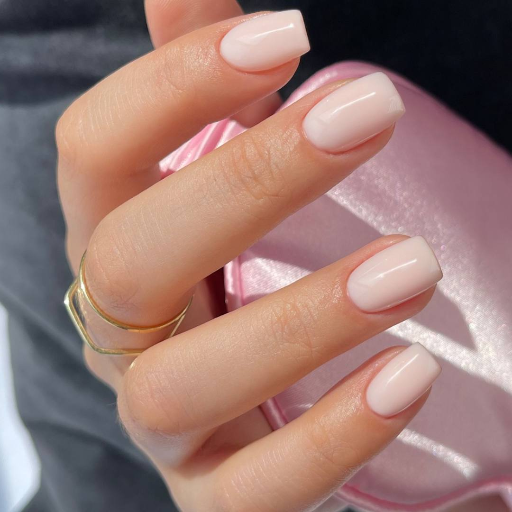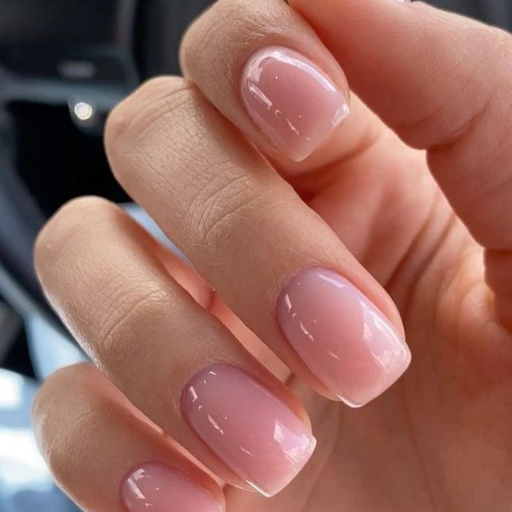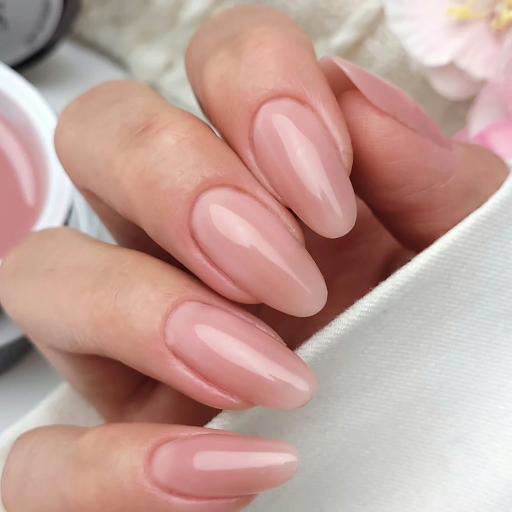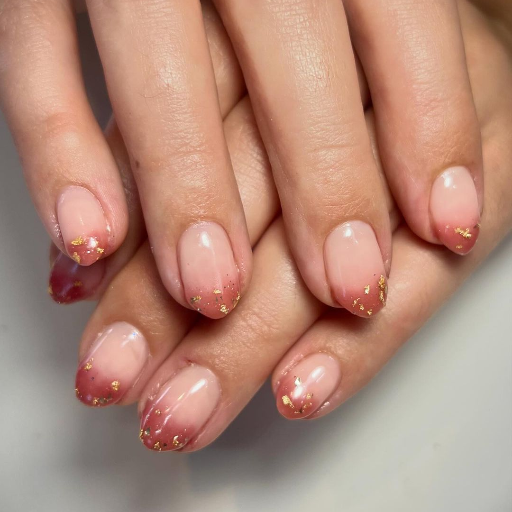Skincare relies heavily on facial cleansers, which are fundamental to maintaining one’s skin as the first line of defense against dirt, oil, and outside pollution. This guide provides you with a comprehensive understanding of face cleansers, their functioning, their types, their components, and most importantly, how to select the most appropriate one for your particular skin type. Common myths will also be tackled and practical steps suggested to help you use a cleanser in your daily routine. If you’re just starting to look after your skin or want to improve your washing routine further, with more enhanced therapies, this article intends to provide you with enough information to enable you to make wise choices for well-nourished and glowing skin.
What is a Cleanser and How Does it Work?

Cleansers are beauty products that are regarded as important components of the skincare routine since they provide protection against clogged pores, and breakouts and facilitate the application of other skin care products suited for the skin type. It is such a product that is specifically developed in a manner that its cleansing active ingredients bond with dirt, oil, makeup, dead skin, and other impurities so that all can be rinsed off easily without damaging the natural barriers of the skin. Nowadays, a range of baked creams, foams, gels, and oils are also available which are also cleansers suitable for different skin types.
Understanding the Basics of a Cleanser
Cleansers consist of surfactants as their active components. These surfactants such as sodium lauryl sulfate and coco-glucoside lower the surface tension and facilitate the emulsification of oils and dirt, which enables the removal of impurities in the skin. Moreover, emulsifiers are often supplemented with ingredients that help to counteract skin dryness such as glycerin and hyaluronic acid. Salicylic acid for exfoliation and niacinamide for soothing the skin have also been included in some formulations to address the concerns of the skin as well.
Modern formulations are developed in such a way that they do not overly strip the skin off its natural lipid barrier which is essential for protection and content hydration. Whether using a gel for oily skin, a cream for dry skin, or an oil-based cleanser for makeup, selecting the appropriate formulation is crucial.
How Do Cleansers Work on Your Skin?
Cleansers remove sebum, dirt, makeup, and other pollutants from the skin with the help of hydration and mild exfoliation sometimes. They utilize surfactants and emulsifiers as their key ingredients. Surfactants are the active components that assist in dissolving the impurities and removing them through water by sticking to them in the first place. Also, most of the cleansers are designed to not disrupt the normal skin pH level while still being able to remove certain microbes from the surface that might have the potential to irritate the skin, while also making sure the lipid layer is not destroyed. Such capabilities are important for the skin in fending off various environmental hazards whilst also keeping the skin moisturized which is why every single skincare routine finds itself starting with cleansing.
The Difference Between a Face Wash and a Facial Cleanser
Both face wash and facial wash aim to clean the surface of the skin; however, they differ in what some may consider their core functions, composition, and application. A more specific example would be a face wash, which is predominantly a bubbling or gel formulation reinforced in its function of cleansing oils, sweat, dirt, and any demarcated impurities within the pores, aiding people who suffer from acne, as it helps to curb the overproduction of sebum. Conversely, a facial cleanser is creamier or in some cases lotion-like in terms of texture and is relatively mild but moisturizing to the skin, so the cleaning is gentler. Cleansers for example would help wash away makeup, dirt, and oil from the skin without any greater harm or adverse effect on the skin in terms of dryness. Gentler-in-action, cleansers are better used throughout the day whereas cleanses are best in the mornings alongside the regular skincare regime. It goes without dispute that maintaining good skin requires one to know their skin type and what it requires as a certain skin type may not benefit from the above two products.
How to Choose the Right Cleanser for Your Skin Type?
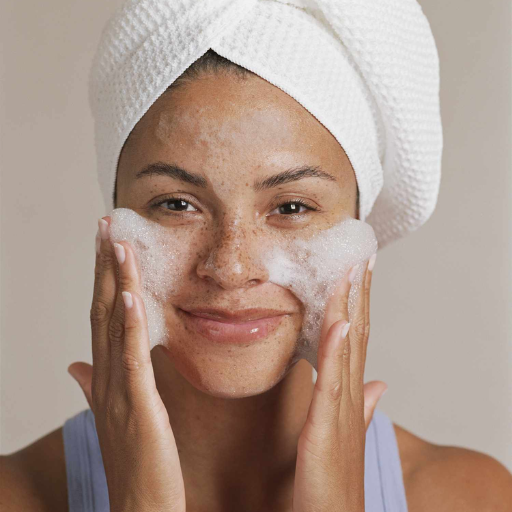
To begin, knowing your skin type is essential for selecting an appropriate cleanser: is your skin oily, dry, combination, or sensitive? Gel or foam cleansers are recommended for oily skin as they control excess oil and clear the congestion of pores. Cream-based or hydrating cleansers with hyaluronic acid or glycerin are ideal for dry skin as they help in moisture retention. For combination skin, multi-functional cleansers are most effective in soothing the oily areas without drying the dry ones. Sensitive skin tends to require a fragrance-free gentle cleanser containing aloe vera or chamomile. Those ingredients help to alleviate skin irritation. Formulae that are marked as non-comedogenic should be preferred always to inhibit clogging of the pores.
Finding a Cleanser for Your Skin Type
Choosing the right skin treatment product starts by knowing your skin’s requirements. For example, if one has oily skin, it is wise to use gel-based or foaming cleansers with ingredients like salicylic acid, niacinamide, or tea tree oil to control oil production and help with acne. In case of dry skin, creamy cleansers, which contain hyaluronic acid, ceramides, or glycerin are preferable as they help strengthen the skin barrier and moisturize. On the other hand, combination skin usually has T Zones which need hybrid cleansers with a balance that will hydrate these areas without removing the moisture in drier spots – exfoliants such as lactic acid seem to be perfect. If one has sensitive skin, it is recommended to use mild hypoallergenic cleansers free from sulfates and irritating chemicals – chamomile, aloe vera, or calendula-based products. Regardless of the type of skin, it is advisable to go for non-comedogenic and clinically recommended products so that your skincare routine does not promote breakouts.
Identifying Skin Type: Oily, Dry, or Combination?
To see what type your skin falls under, start by checking what changes throughout the day in how your skin feels and looks. If your skin is shiny most times and feels greased – especially in the T-zone area which is the forehead, nose, and chin – you most likely have oily skin. Oily skin tends to have more pronounced pores than normal and is more likely to have acne. On the other hand, if your skin feels dry or tight and flaky or rough especially after you wash your face, you most likely have dry skin. Other mixtures of skin scars have dry or normal patches on the cheeks but have an oily T-zone; this type of skin is known as combination skin. One do-it-yourself skincare test includes washing the face with mild soap rubbing it gently, drying it up with towel blotting, and waiting for two hours without using any skincare products. After that, check the texture of the skin and the level of oil in the skin.
Best Cleanser for Acne-Prone Skin
When looking for a cleanser for acne-prone skin, it is critical to take into account that the ingredients aim to reduce oiliness and unclog pores and bacteria responsible for the breakout. Salicylic acid or benzoyl peroxide are the ingredients specifically recommended as they have been known to minimize breakouts by cutting down on bacteria and promoting exfoliation. Sufferers of sensitive and dry acne-prone skin should, however, avoid them and instead choose gel-based or foam cleansers that include niacinamide or ceramides since they are more effective and prevent irritation. Non-comedogenic products should be a necessity so that no further pore occlusions are encouraged. Also, it would not be appropriate to use aggressive scrubbing cleansers since they intensify inflammation and irritation. So, if used frequently, these types of cleansers can prevent acne from occurring in the long run.
What are the Different Types of Cleansers?

Cleansers can be classified based on their preparations and the purposes they serve into the following categories:
Gel Cleansers – These are made up of water and are most suitable for oily or acne-prone skin types as they contain properties that deep clean and unclog pores.
Foam Cleansers – These don’t have a thick consistency but produce lite foam and are effective in the removal of excess oil and dirt, therefore are effective for combination or oily skin types.
Cream Cleansers – Cream Cleansers according to their name have a thicker, creamy, and hydrating compound and are suited for dry or sensitive skin as they do not remove oils.
Micellar Water – Uses micelle molecules to attract dirt, and make-up and is ideal for sensitive skin or people looking for something that does not require rinsing off.
Oil Cleansers – These typically are used as a part of a double cleanse technique as they remove makeup, sunscreen, and excessive sebum.
Clay Cleansers – These are specifically designed and suitable for oily skin types as they detoxify and absorb impurities.
Hence, each type is made for a specific need and to choose an appropriate cleanser for individual purposes and concerns knowing these differences is important.
Exploring Foaming Cleansers and Their Benefits
It is quite common to see foaming cleansers being used as these products assist the user in achieving a fluffy and thick lather which serves to get rid of dirt, oil, and other impurities on the skin. Most of these cleansers use surfactants as active ingredients to emulsify the excess sebum and other residues making them particularly advantageous to people who have oily or even acne-prone skin. Besides washing, foaming cleansers have the added benefit of being deep cleansers leaving the skin clean and free of any residue. However, it is crucial to first check the formulation as some types may cause dryness due to cleaning out natural oils. Using pH-balanced and hydrating foaming cleansers should provide a balance between effective cleansing and not loss of the skin barrier.
Understanding Oil-Based Cleansers
Oil-based cleansers are formulated to dissolve excess sebum, sunscreen, and even waterproof makeup effectively. Using the principle of “like dissolves like,” these cleansers bind to oily impurities, allowing them to be rinsed away without disrupting the skin’s natural moisture levels. They are ideal for dry or sensitive skin types, as they often contain nourishing oils that help maintain hydration. Additionally, oil-based cleansers are a key step in double cleansing routines, where they serve to thoroughly remove surface impurities before following up with a water-based cleanser. When selecting an oil-based cleanser, consider non-comedogenic options to prevent clogged pores, and ensure it suits your skin type for optimal results.
The Role of Exfoliating Cleansers in Your Skincare Routine
Exfoliating cleansers are integral to maintaining clear, smooth skin by removing dead skin cells, excess oil, and surface debris. These cleansers combine cleansing agents with chemical or physical exfoliants to improve skin texture and enhance the absorption of subsequent skincare products. Chemical exfoliants, such as alpha-hydroxy acids (AHAs) and beta-hydroxy acids (BHAs), work effectively to dissolve bonds between dead cells, making them ideal for treating uneven tone, acne, and fine lines. On the other hand, physical exfoliants use gentle abrasives like microbeads or natural granules to manually scrub the skin. When incorporating exfoliating cleansers into your regimen, limit usage to 2-3 times per week to prevent over-exfoliation, and select products that match your skin type to achieve optimum results.
How to Use a Cleanser in Your Skincare Routine?

To use a cleanser effectively in your skincare routine, begin by wetting your face with lukewarm water to open pores and facilitate cleansing. Dispense a small amount of cleanser into your hands and work it into a gentle lather. Massage the product onto your skin using circular motions, ensuring coverage of all areas, while avoiding the sensitive eye region. Rinse thoroughly with lukewarm water to remove all residue, and pat your face dry with a clean towel. This process should be performed once or twice daily, depending on your skin type and the specific cleanser used, to ensure the removal of dirt, oil, and impurities without disrupting the skin’s natural barrier.
When to Use a Cleanser for Best Results
For optimal results, a cleanser should be used both in the morning and the evening as part of your skincare routine. Cleansing in the morning removes sweat, oil, and any bacteria that accumulated overnight, preparing your skin for the day ahead and enhancing the effectiveness of subsequent skincare products. Evening cleansing is essential to eliminate makeup, dirt, pollution, and excess oils that build up throughout the day. For those with oily or acne-prone skin, double cleansing during the evening may further ensure the thorough removal of buildup. However, over-cleansing can disrupt the skin’s natural barrier, so individuals with dry or sensitive skin may benefit from a gentler, once-daily routine or as recommended by a dermatologist.
Steps to Effectively Cleanse Your Face
- Begin with Clean Hands
Before touching your face, ensure your hands are thoroughly washed to prevent transferring dirt or bacteria onto your skin.
- Wet Your Face with Lukewarm Water
Lukewarm water helps to open pores gently without irritating them, ensuring better penetration of your cleanser.
- Apply the Right Cleanser for Your Skin Type
Use a cleanser formulated for your specific skin type—gel or foam cleansers for oily skin, cream-based or hydrating formulas for dry or sensitive skin, and gentle options for combination skin. Massage it into your skin for about 30 seconds using circular motions.
- Rinse Thoroughly
Remove the cleanser with lukewarm water, making sure no residue is left, as this can lead to irritation or clogged pores.
- Pat Your Skin Dry
Use a clean, soft towel to pat—rather than rub—your face dry, as rubbing can damage the skin barrier or cause redness.
- Follow Up With Skincare Products
After cleansing, immediately proceed with your skincare routine, such as applying toners, serums, or moisturizers, while your skin is slightly damp to lock in hydration.
By adhering to these steps, you can optimize the cleansing process, maintain a healthy skin barrier, and promote long-term skin health.
Can You Wash Your Face in the Shower?
Yes, you can wash your face in the shower, but there are important considerations to ensure it is done correctly. Water temperature is a critical factor—hot water, commonly used in showers, can strip the skin of natural oils and compromise the skin barrier, leading to dryness or irritation. Using lukewarm water is ideal to effectively cleanse without causing damage. Additionally, be mindful of the direction of water flow to avoid overly aggressive contact with your skin. It is also recommended to use a facial cleanser suited to your skin type and avoid relying on body cleansers or soaps, as these can be too harsh for the face. Washing your face in the shower can be convenient and efficient, particularly when you cleanse before the end of your shower routine to minimize exposure to steam and heat.
Common Mistakes to Avoid When Using Cleansers

- Using the Wrong Cleanser for Your Skin Type
Selecting a cleanser that is not suited to your specific skin type can lead to imbalances. For example, harsh cleansers can strip oil from dry skin, while heavy, oily cleansers may clog pores in acne-prone skin.
- Over-Cleansing
Washing your face too frequently or for prolonged periods can disrupt the natural skin barrier, resulting in irritation and dryness. Stick to cleansing twice daily—morning and evening—or after heavy sweating.
- Using Harsh Ingredients
Avoid cleansers with alcohol, sulfates, or added fragrances that can irritate sensitive skin. Opt for gentle, pH-balanced formulas that maintain the skin’s integrity.
- Skipping a Thorough Rinse
Not rinsing your face thoroughly can leave cleanser residue behind, which may clog pores or cause irritation. Use adequate water to ensure all product is removed.
- Using Hot Water
Cleaning with water that is too hot can cause redness, dryness, and damage to the skin. Always use lukewarm water to preserve the skin’s natural moisture balance.
Using the Wrong Amount of Cleanser
Using too much cleanser can overwhelm the skin, leading to excessive dryness or difficulty rinsing the product off completely, which may irritate it. On the other hand, using too little cleanser may result in inadequate removal of dirt, oil, and impurities, undermining the purpose of cleansing. To achieve optimal results, follow the recommended amount specified on the product packaging—usually a dime-sized amount for most cleansers. Adjust the amount slightly depending on factors such as skin type, level of dirt or makeup, and cleanser formulation. Proper application ensures effective cleansing without disrupting the skin’s natural barrier.
Over-Cleansing: How Much is Too Much?
Over-cleansing occurs when the skin is washed too frequently or aggressively, disrupting its natural protective barrier. This can lead to issues such as dryness, irritation, redness, and an overproduction of oil as the skin tries to compensate for the loss of its natural oils. For most individuals, cleansing the skin twice daily—once in the morning and once at night—is sufficient to maintain a healthy balance. However, this may vary depending on skin type and lifestyle. For example, those with dry or sensitive skin may benefit from cleansing only at night, while individuals with oily or acne-prone skin might require more consistency. Using gentle, non-stripping cleansers and paying attention to the skin’s reaction ensures that the cleansing routine supports, rather than harms, the skin’s health.
Not Considering Your Specific Skin Needs
Ignoring your skin needs when selecting and applying skincare products can inadvertently worsen skin conditions or lead to imbalances. Skin types broadly include normal, oily, dry, combination, and sensitive, each requiring tailored care. For instance, oily skin benefits from lightweight, non-comedogenic products that reduce excess sebum without stripping essential moisture, while dry skin thrives with hydrating and emollient-rich formulas. Sensitive skin demands products free of irritants like fragrances or harsh chemicals to minimize inflammation. Additionally, external factors such as climate, age, and lifestyle play crucial roles in determining what works best for your skin. Conducting patch tests, consulting a dermatologist, and making informed adjustments based on real-time changes in your skin’s condition are essential practices for optimizing skincare routines.
References
Frequently Asked Questions (FAQ)
Q: What is the difference between a face wash and a face cleanser?
A: A face wash typically has a foaming formula used to remove dirt and oil from the surface of the skin, while a face cleanser is formulated to cleanse your skin more gently, removing impurities without stripping the skin of its natural oils. Both are essential for maintaining healthy skin, but you should choose based on your skin type and needs.
Q: How often should I use a face cleanser?
A: It is generally recommended to use a face cleanser twice a day, once in the morning and once at night, to effectively cleanse the skin and keep your skin looking healthy. However, the frequency can be adjusted depending on your skin type and personal skincare routine.
Q: What type of face cleanser is best for dry or sensitive skin?
A: For dry or sensitive skin, a gentle cleanser is best, as it will cleanse the skin without stripping it of its natural moisture. Look for cleansers that are hydrating and free from harsh chemicals to leave your skin feeling soft and comfortable.
Q: Can a face cleanser be used to remove makeup?
A: Some face cleansers are formulated to remove makeup, but it is often more effective to use a dedicated makeup remover first, followed by a face cleanser to ensure impurities from your skin are fully washed away.
Q: Is a gel cleanser suitable for oily or acne-prone skin?
A: Yes, a gel cleanser is often ideal for oily or acne-prone skin as it helps to deep cleanse pores, remove excess oil, and target impurities without over-drying the skin, leaving your skin feeling fresh and clean.
Q: How do I choose a cleanser based on my skin type?
A: To choose a cleanser best for your skin type, consider your specific needs: use a gentle, hydrating cleanser for dry or sensitive skin, a gel or foaming cleanser for oily skin, and a balanced formula for combination skin to maintain healthy skin and texture.
Q: What ingredients should I look for in a cleanser for acne-prone skin?
A: For acne-prone skin, look for ingredients like salicylic acid, benzoyl peroxide, or tea tree oil, which are known to help cleanse skin, reduce acne, and prevent future breakouts by removing impurities from your skin.
Q: Can using a face cleanser help achieve radiant skin?
A: Yes, regularly using a face cleanser as part of your skincare routine can help keep your skin looking radiant by removing dead skin cells, dirt, and oil, and leaving your skin feeling refreshed and balanced.
Q: What is the best way to apply a face cleanser?
A: To apply a face cleanser, wet your face with lukewarm water, then massage the cleanser into your skin using gentle, circular motions. Rinse thoroughly to wash away all residues, leaving your skin clean and prepared for the next steps in your skincare routine.


